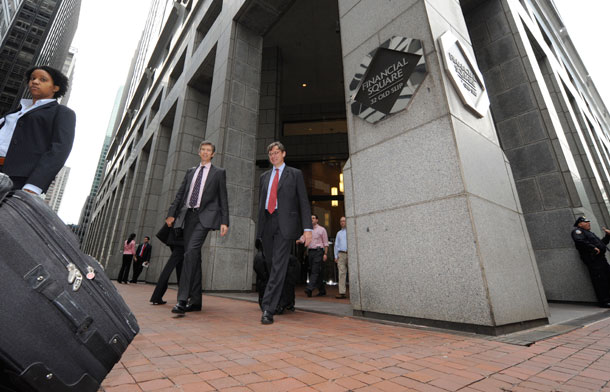 A set of New York City nonprofits are working together to keep Rikers Island juvenile detention center residents from returning, and are using money from investment banker Goldman Sachs to do it.
A set of New York City nonprofits are working together to keep Rikers Island juvenile detention center residents from returning, and are using money from investment banker Goldman Sachs to do it.
About half of the 16- to 18- year-old males who pass through Rikers Island will return within a year, according to David Butler, who’s heading the team working on the project at nonprofit social research organization MDRC. “Anything we can do to change that is good,” he said.
MDRC will oversee the ABLE program, which will be mandatory for the young men at Rikers by the time it is fully rolled out in January 2013 for a four-year run. The Adolescent Behavioral Learning Experience is a method of teaching things like personal responsibility, anger management and impulse control with the aim of restructuring the student’s way of thinking.
And it could not have been deployed on the Rikers scale, perhaps 3,400 students annually, without the cash Goldman Sachs agreed to provide.
The investment bank is putting $9.6 million into a so-called social impact bond to put MDRC to work at Rikers. An SIB is a new type of investment that grows only if some public good is achieved and shrinks if it doesn’t. The model comes from the United Kingdom and the New York City rollout is among the first stateside and something of a pilot program.
If MDRC fails to cut the recidivism rate, the value of Goldman’s payout falls. If MDRC succeeds, the investment grows.
The bank’s maximum return is capped at $2.1 million and its losses capped at $2.4 million. According to MDRC, the top payout would be triggered by a 20 percent fall in the Rikers recidivism rate.
At that level, New York City would save something like $20 million by MDRC’s math, savings from youth staying out of Rikers and trouble.
Once Goldman Sachs is repaid, any additional savings go into a social intervention fund administered by MDRC and Bloomberg Philanthropies, the vehicle for the charitable activities of New York City Mayor Michael Bloomberg.
In fact, Bloomberg Philanthropies is also cushioning the risk to the bank by guaranteeing $7.2 million of what’s technically a loan from Goldman Sachs to MDRC.
Yet if anything matches public disdain for jail, it’s suspicion of the honesty of anything to do with investment bankers.
“We understand that there are concerns about our connection with a bank,” said Butler, “but we are comfortable with that.”
He pointed to the long records of other nonprofit partners in the venture. The Friends of the Island Academy — dating from when the island’s school went by that name — and the 80-year-old prison-reforming Osborne Association will actually deliver the services to the youth. And the Vera Institute of Justice handles the metrics that decide Goldman Sachs’ payout.
“The SIB structure only works if your evaluator is independent,” noted Reagan Daly, associate research director for the Center on Youth Justice at Vera. “We’re keeping that distance, independence and objectivity.”
Vera matches research, innovation, ideas and data about justice and safety to public leaders.
Daly explained that Vera’s calculations are more nuanced than whether a young man simply returns to Rikers or not.
“If they don’t come back at all, that’s obviously a success,” she said, “but if they return, it’s how much they stay there.”
And an inmate that goes through the MDRC program has to be measured against a comparable inmate, too, she noted.
The math “does take into account a kid’s individual factors,” like arrest rate, court history and other things, she said.
“We’ll control for those things” to get an accurate calculation, Daly said.
